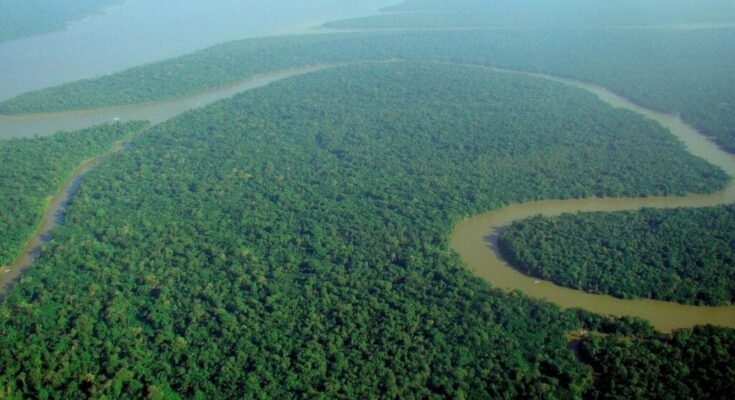
Deforestation has resulted in the loss of more than 85 million hectares of land in the Amazon Rainforest. This is nearly the size of Colombia.
The Amazon Rainforest is arguably the world’s largest and most significant rainforest. It spans nine countries across South America, is almost the size of the continental United States, and is double the size of India. Despite its enormous size, the rainforest is significantly smaller than it used to be.
Losing a Colombia-sized chunk
The Amazon rainforest was more than 647 million hectares before people began wholesale deforestation. Since then, it is estimated that 13 percent of the land has been lost as a result, bringing the total size of the rainforest to about 560 million hectares in 2024.
The total loss of rainforest is about 87 million hectares, nearly the size of Colombia’s total landmass, which is about 114 million hectares. For reference, Colombia is the 25th largest country in the world and is the fourth largest in South America. Today, Colombia contains about 7 percent of the rainforest within its borders.
The Amazon covers parts of Brazil, Peru, Bolivia, Ecuador, Colombia, Venezuela, French Guiana, Guyana, and Suriname. Much of the rainforest, about 60 percent, is within Brazil’s borders.
Why is deforestation taking place in the Amazon Rainforest?
The reasons for the Amazon’s deforestation vary widely. They are as varied as the countries in which the rainforest is found.
However, there are also more generalized reasons, as indicated below, as to why so much land has been lost.
Cattle ranching
Clearing land for livestock and cattle is the most significant cause of land loss in the Amazon rainforest. According to the World Wildlife Federation (WWF), cattle ranching is responsible for an estimated 80 percent of the total deforestation in the Amazon. As demand for beef skyrockets worldwide, cattle also need enough space.
Brazil is the largest exporter of cattle products in the world. According to the WWF, the nation also possesses 88 percent of the total deforested Amazon land. That land in Brazil has been cleared to make room for more cattle.
Illegal logging
The most infamous cause of land loss in the Amazon is illegal logging. According to a study by the Simex Network, almost 40 percent of logging in the Amazon Rainforest was done illegally from 2020 to 2021.
Loggers deforest the rainforest both legally and illegally because rainforests are a treasure trove of hardwoods that can be sold below market value.
Natural resources
In countries such as Bolivia and Venezuela, the Amazon rainforest offers opportunities to extract oil and gas. Venezuela is known to have the most oil reserves, which account for about 19 percent of the world’s oil.
While most of Venezuela’s oil is in the Orinoco Belt, Venezuela continues to mine extensively in the rainforest for oil and gas.
The point of no return for the Amazon Rainforest
The Amazon Rainforest could lose even more than Colombia’s total land mass due to deforestation within a decade. Furthermore, scientists believe the Amazon could hit a tipping point by 2050.
Bernardo Flores of the Federal University of Santa Catarina, Brazil led a study published in Nature on the Amazon. The study concluded that there could be a critical point of no return if things continue at the current rate. The study emphasized that the rainforest has already been significantly weakened, and if humanity keeps harming it, it could have unpredictable side effects on the world in general.
Flores cautioned, “By 2050, it will accelerate rapidly. We need to respond now. Once we pass the tipping point, we will lose control of how the system will behave.”



